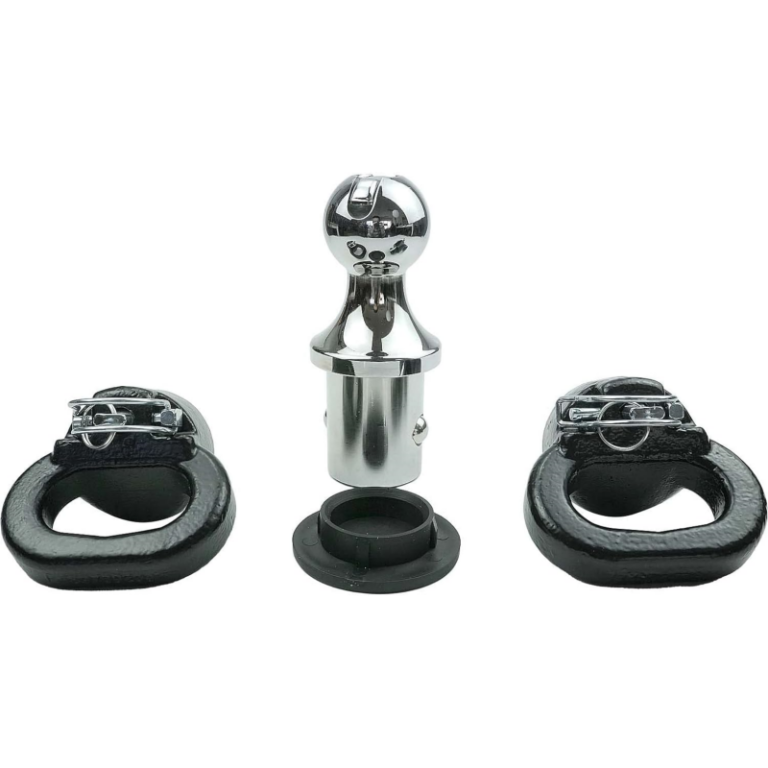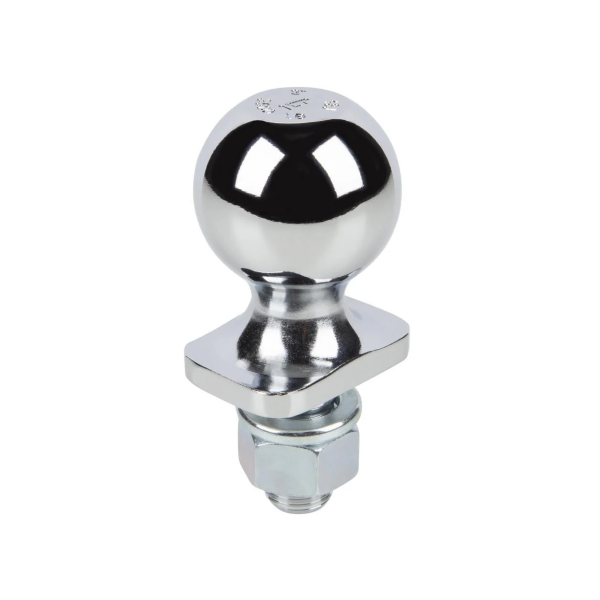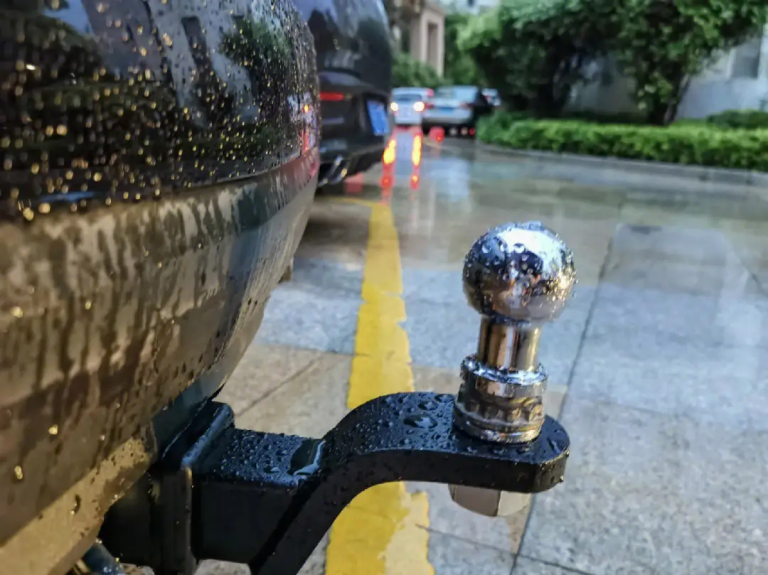Towing can be an essential part of many activities, including moving homes, transporting boats, or carrying large loads. However, safety is paramount when it comes to towing, and one critical component you can’t overlook is the trailer hitch ball. Understanding its function and importance can make a significant difference in your towing experience.
Understanding the Basics of Towing
What is a Trailer Hitch Ball?
A trailer hitch ball, often referred to simply as a hitch ball, is a spherical attachment mounted on the rear of a towing vehicle. The hitch ball acts as a pivotal connection point between the towing vehicle and the trailer. Its main role is to provide a secure and flexible link that allows the trailer to pivot and follow the vehicle smoothly. The trailer hitch ball’s design makes it capable of handling varying degrees of force and weight, providing stability and safety during towing operations.
How Does a Trailer Hitch Ball Work?
The trailer hitch ball works by securing the trailer’s coupler onto the hitch ball mount. When towing, the coupler, attached to the front of the trailer, slides over the hitch ball and locks into place. This locking mechanism allows the trailer to pivot on the ball as the towing vehicle turns or encounters bumps on the road. The hitch ball’s spherical shape enables a wide range of motion, ensuring that the trailer follows the towing vehicle without causing stress or unwanted detachment. The hitch ball is an essential part of avoiding sway and ensuring a safe towing experience.
Different Types of Trailer Hitch Balls
When choosing a trailer hitch ball, it’s essential to know that there are different types designed for specific towing needs. Common types include:
- Standard Hitch Balls: These are the most common and versatile, suitable for general towing purposes.
- High-Dome Hitch Balls: These provide an enhanced range of motion, particularly useful for trailers that need to navigate sharp turns.
- Gooseneck Hitch Balls: Specifically designed for heavy-duty towing, often used with larger trailers and fifth-wheel applications.
- European Hitch Balls: Found mainly on European vehicles, these typically have a different coupling mechanism and specific requirements.
Each type offers unique advantages depending on your towing requirements and the type of load you plan to transport.
Importance of Using a Trailer Hitch Ball
Enhancing Safety While Towing
Safety should always be your top priority when towing. The trailer hitch ball plays a crucial role in maintaining a secure and stable connection between your vehicle and trailer.
Preventing Sway and Instability
Trailer sway or fishtailing can be dangerous, especially at high speeds. A well-chosen trailer hitch ball helps to distribute the trailer’s weight evenly, minimizing the risk of sway. By reducing lateral movement, it ensures that the trailer remains aligned with the towing vehicle, even during sudden maneuvers or windy conditions.
Ensuring Proper Weight Distribution
Proper weight distribution is fundamental for safe towing. A correctly matched trailer hitch ball helps to balance the load between the towing vehicle and the trailer. This balance prevents undue stress on the vehicle’s suspension and brakes, reducing the chances of accidents caused by trailer or vehicle instability.
Legal Requirements and Safety Standards
Using the right trailer hitch ball isn’t just about safety; it’s also a legal requirement. Many jurisdictions have specific regulations and standards for towing equipment. These laws are in place to ensure that towing practices adhere to safety guidelines, protecting both the driver and other road users. A certified and appropriate trailer hitch ball will comply with these legal standards, helping you avoid fines, penalties, and potential liability issues.
Choosing the Right Trailer Hitch Ball for Your Needs
Determining the Correct Size and Weight Capacity
Selecting the right trailer hitch ball involves more than just picking one off the shelf. You need to ensure that the size and weight capacity match your towing requirements precisely. The size of the hitch ball is typically measured by its diameter, and common sizes include 1-7/8 inches, 2 inches, and 2-5/16 inches. Begin by matching the hitch ball size to the coupler size of your trailer. Next, consider the weight capacity, which needs to meet or exceed the gross trailer weight to ensure safe towing. For these details, checking your vehicle’s specifications and consulting the trailer’s manual will provide the most accurate information.
Matching Your Vehicle’s Specifications
Before purchasing a trailer hitch ball, it’s essential to understand your vehicle’s towing capacity and hitch receiver size. The towing vehicle should be able to handle the total weight of the trailer and its contents. Check the vehicle manual for recommended hitch ball sizes and weight limits. Ensuring compatibility between the vehicle and the hitch ball is crucial to avoid overloading, which can lead to mechanical failure or unsafe driving conditions.
Consulting Your Trailer’s Manual
The instructions for your trailer is another important thing to look at when picking out a trailer hitch ball. The guidebook gives specific advice on the hitch ball size and weight limit based on how the trailer is designed and what it will be used for. By following these suggestions, you can be sure that the hitch ball and coupler will work together perfectly, making pulling safe and stable. If you have lost or misplaced the manual, checking the trailer manufacturer’s website for online copies or customer support can still provide you with the necessary information.
Materials and Durability Considerations
The material of the trailer hitch ball significantly impacts its durability and performance. Most hitch balls are made from chrome-plated steel, stainless steel, or zinc-coated steel. Chrome-plated and stainless steel offer excellent resistance to corrosion and rust, making them ideal for frequent towing or harsh weather conditions. Zinc-coated steel is a less costly option but still provides good protection against the elements. Consider the conditions you typically tow under and how frequently you use the hitch ball when choosing the right material. For long-term performance and reliability, investing in a well-made hitch ball pays off in the long run.
Go Trailer Parts, a renowned trailer parts manufacturer based in Qingdao, China, offers a wide range of high-quality trailer parts, including the Trailer Hitch Ball. This particular component is primarily used for towing trailers and is an essential accessory for camping and other outdoor activities. The Trailer Hitch Ball serves as a connecting link between the trailer and the vehicle, ensuring safe traction and transportation.
The Trailer Hitch Ball is installed on the Trailer Hitch Ball Mount, which is affixed under the rear bumper of the towing vehicle. This setup plays a crucial role in ensuring the smooth and safe transfer of traction between the vehicle and the trailer. Go Trailer Parts offers a top-notch 50mm Ball and Puck System Gooseneck Hitch Ball Kit, designed for superior towing performance. The 2-5/16 Inch Gooseneck Ball included in the kit ensures a secure connection and smooth towing experience, making it an essential accessory for heavy-duty transportation and outdoor adventures.Whether you’re transporting heavy goods or embarking on an outdoor adventure, Go Trailer’s Trailer Hitch Ball guarantees a secure and stable connection for your towing needs.
Installation and Maintenance Tips
Step-by-Step Guide to Installing a Trailer Hitch Ball
Installing a trailer hitch ball might seem straightforward, but following a methodical approach ensures it is securely and properly attached.
Tools You’ll Need
To install a trailer hitch ball, you’ll need a few basic tools: an adjustable wrench or a socket wrench, torque wrench, and possibly a set of pliers. It’s advisable to have a lubricant on hand to ease the installation process and minimize the risk of rust and corrosion. Preparing these tools beforehand can streamline the installation process and prevent complications.
Common Mistakes to Avoid
One common mistake when installing a trailer hitch ball is not tightening it to the proper torque specification. This can lead to loosening over time, resulting in an unsafe towing situation. Always refer to the manufacturer’s guidelines for the correct torque setting. Another mistake is mismatching the hitch ball shank size to the trailer hitch mount hole, which can cause instability. Ensuring that all parts are compatible and fit correctly is crucial for safe towing. Lastly, avoid using damaged or worn-out components, as this can compromise the entire towing setup.
Regular Maintenance for Longevity
Proper maintenance of your trailer hitch ball enhances its durability and ensures safe towing operations.
Checking for Wear and Tear
Routine inspections can catch wear and tear early. Examine the hitch ball for any signs of rust, cracks, or deformities. Check the coupling mechanism for proper function and ensure the hitch ball is securely fastened. If you notice any damage or excessive wear, replace the hitch ball immediately to avoid potential failure during towing.
Lubrication Tips
Lubricating your trailer hitch ball reduces friction between the coupler and the ball, preventing wear and corrosion. Apply a thin layer of automotive grease to the hitch ball before each use to ensure smooth operation. Wipe off any excess grease after towing to prevent dirt buildup, which can cause abrasion. Regular lubrication extends the life of the hitch ball and improves the overall towing experience.
Real-Life Scenarios: When and Why to Use a Trailer Hitch Ball
Towing a Boat or Camper
When towing a boat or camper, a reliable trailer hitch ball is crucial. These trailers often involve heavy loads and require maneuvering in tight spaces or on varied terrains. A standard or high-dome hitch ball can provide the necessary stability and range of motion to handle sharp turns and uneven surfaces. Ensuring the hitch ball can bear the weight of the boat or camper prevents accidents and maintains the integrity of your towing setup.
Moving Heavy Equipment or Furniture
Moving heavy equipment or large pieces of furniture often involves hauling trailers with considerable weight. In these instances, using a sturdy and appropriately sized trailer hitch ball is essential. The right hitch ball helps distribute weight evenly between the vehicle and the trailer, making it easier to control and maneuver safely. Be sure to choose a hitch ball with a weight rating that matches or exceeds the total load to avoid overstraining your vehicle and towing setup.
Wrap-Up: Making Safe Towing Decisions
Understanding the role and importance of a trailer hitch ball in towing operations cannot be overstated. From enhancing safety and stability to meeting legal requirements, this small but mighty component plays a pivotal role in ensuring smooth and secure towing experiences. By choosing the correct size and material, following proper installation procedures, and maintaining the hitch ball regularly, you can enjoy the peace of mind that comes with safe towing. Whether towing a boat, camper, heavy equipment, or anything in between, the right trailer hitch ball makes all the difference for both you and those sharing the road.








